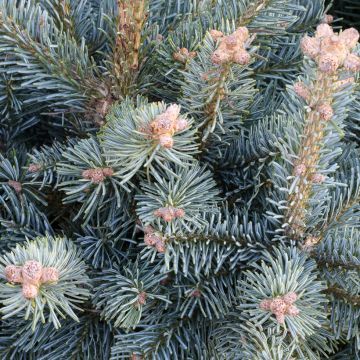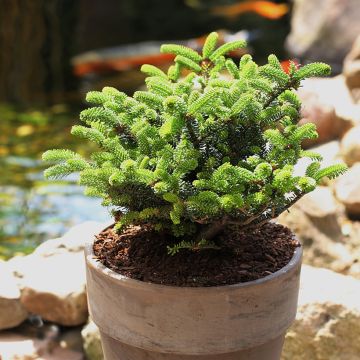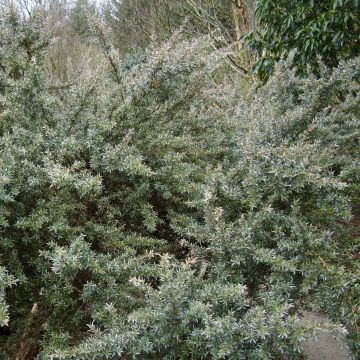

Abies koreana Nadelkissen - Sapin de Corée nain
Abies koreana Nadelkissen - Korean Fir
Abies koreana Nadelkissen
Korean Fir
Fast delivery and careful packaging. You need to be patient to see it grow. Adorable.
Alain R., 06/04/2017
Special offer!
Receive a €20 voucher for any order over €90 (excluding delivery costs, credit notes, and plastic-free options)!
1- Add your favorite plants to your cart.
2- Once you have reached €90, confirm your order (you can even choose the delivery date!).
3- As soon as your order is shipped, you will receive an email containing your voucher code, valid for 3 months (90 days).
Your voucher is unique and can only be used once, for any order with a minimum value of €20, excluding delivery costs.
Can be combined with other current offers, non-divisible and non-refundable.
Why not try an alternative variety in stock?
View all →This plant carries a 24 months recovery warranty
More information
We guarantee the quality of our plants for a full growing cycle, and will replace at our expense any plant that fails to recover under normal climatic and planting conditions.
Would this plant suit my garden?
Set up your Plantfit profile →
Description
This miniature Korean fir, called Abies koreana 'Nadelkissen', forms a pretty, well-structured ball, with a very neat appearance, covered in fairly wide, light and vibrant green, shiny needles with a silver underside. In spring, its small, prominent brown buds at the end of branches bring colour to the foliage. With its very slow growth and small size, it is perfect for small gardens, rockeries or in containers, in well-drained, moist soil, sheltered from the scorching sun.
The Korean fir is a conifer of the pinaceae family, native only to the mountains in the extreme south of Korea, and has become rare in its own country. This small conifer reaches a height of 6 to 9 metres (20 to 29 feet) in its natural environment and has a compact habit. The 'Nadelkissen' variety represents a miniature version of this species and was selected in Germany in 1990. It will not exceed 30 to 40 cm (12 to 16in) in all directions, even after many years of cultivation, as it only grows 3 cm (1in) per year. It forms a ball, made up of branches where wide and flexible needles are attached, green on top and silver on the underside. Its small spring buds crown its foliage with a velvety brown texture.
Abies koreana 'Nadelkissen' is ideal for container cultivation on a terrace or in small gardens, thanks to its slow growth and small size. With its dense cushion-like silhouette, which does not require pruning, it would work well in rockeries, especially if planted in groups of 3 specimens. The architectural qualities of dwarf conifers naturally come to the fore in the design of a contemporary garden, which prefers the aesthetics of shapes and textures over flowers. These plants, with their strong personality and reassuring permanence, structurally enhance a bed, mark pathways and border terraces, easily replacing the strong presence of pruned boxwood. They serve as a backdrop for roses, peonies, or tousled grasses with a very complementary form, which in return will showcase their full intensity. They can also be associated with ground cover plants such as aubrietas or cerastiums, and flowering shrubs. The key is to play with volumes and colours.
Report an error about the product description
Abies koreana Nadelkissen - Korean Fir in pictures




Plant habit
Foliage
Botanical data
Abies
koreana
Nadelkissen
Pinaceae
Korean Fir
Cultivar or hybrid
Other Abies
View all →Planting and care
Plant Abies koreana 'Nadelkissen' from September to November or from February to June, in ordinary but very well-drained, even stony and rocky soil, enriched with humus, not too dry, in dappled sunlight or partial shade. This species is sensitive to heat and scorching sun. Regularly water the young plants during the two to three summers following planting. The Korean fir should be watered during extended periods of high heat. This bush does not require pruning, but any unsightly or obstructive branches can be removed to enhance its cushion-like shape.
Planting period
Intended location
Care
-
, onOrder confirmed
Reply from on Promesse de fleurs
Similar products
Haven't found what you were looking for?
Hardiness is the lowest winter temperature a plant can endure without suffering serious damage or even dying. However, hardiness is affected by location (a sheltered area, such as a patio), protection (winter cover) and soil type (hardiness is improved by well-drained soil).

Photo Sharing Terms & Conditions
In order to encourage gardeners to interact and share their experiences, Promesse de fleurs offers various media enabling content to be uploaded onto its Site - in particular via the ‘Photo sharing’ module.
The User agrees to refrain from:
- Posting any content that is illegal, prejudicial, insulting, racist, inciteful to hatred, revisionist, contrary to public decency, that infringes on privacy or on the privacy rights of third parties, in particular the publicity rights of persons and goods, intellectual property rights, or the right to privacy.
- Submitting content on behalf of a third party;
- Impersonate the identity of a third party and/or publish any personal information about a third party;
In general, the User undertakes to refrain from any unethical behaviour.
All Content (in particular text, comments, files, images, photos, videos, creative works, etc.), which may be subject to property or intellectual property rights, image or other private rights, shall remain the property of the User, subject to the limited rights granted by the terms of the licence granted by Promesse de fleurs as stated below. Users are at liberty to publish or not to publish such Content on the Site, notably via the ‘Photo Sharing’ facility, and accept that this Content shall be made public and freely accessible, notably on the Internet.
Users further acknowledge, undertake to have ,and guarantee that they hold all necessary rights and permissions to publish such material on the Site, in particular with regard to the legislation in force pertaining to any privacy, property, intellectual property, image, or contractual rights, or rights of any other nature. By publishing such Content on the Site, Users acknowledge accepting full liability as publishers of the Content within the meaning of the law, and grant Promesse de fleurs, free of charge, an inclusive, worldwide licence for the said Content for the entire duration of its publication, including all reproduction, representation, up/downloading, displaying, performing, transmission, and storage rights.
Users also grant permission for their name to be linked to the Content and accept that this link may not always be made available.
By engaging in posting material, Users consent to their Content becoming automatically accessible on the Internet, in particular on other sites and/or blogs and/or web pages of the Promesse de fleurs site, including in particular social pages and the Promesse de fleurs catalogue.
Users may secure the removal of entrusted content free of charge by issuing a simple request via our contact form.
The flowering period indicated on our website applies to countries and regions located in USDA zone 8 (France, the United Kingdom, Ireland, the Netherlands, etc.)
It will vary according to where you live:
- In zones 9 to 10 (Italy, Spain, Greece, etc.), flowering will occur about 2 to 4 weeks earlier.
- In zones 6 to 7 (Germany, Poland, Slovenia, and lower mountainous regions), flowering will be delayed by 2 to 3 weeks.
- In zone 5 (Central Europe, Scandinavia), blooming will be delayed by 3 to 5 weeks.
In temperate climates, pruning of spring-flowering shrubs (forsythia, spireas, etc.) should be done just after flowering.
Pruning of summer-flowering shrubs (Indian Lilac, Perovskia, etc.) can be done in winter or spring.
In cold regions as well as with frost-sensitive plants, avoid pruning too early when severe frosts may still occur.
The planting period indicated on our website applies to countries and regions located in USDA zone 8 (France, United Kingdom, Ireland, Netherlands).
It will vary according to where you live:
- In Mediterranean zones (Marseille, Madrid, Milan, etc.), autumn and winter are the best planting periods.
- In continental zones (Strasbourg, Munich, Vienna, etc.), delay planting by 2 to 3 weeks in spring and bring it forward by 2 to 4 weeks in autumn.
- In mountainous regions (the Alps, Pyrenees, Carpathians, etc.), it is best to plant in late spring (May-June) or late summer (August-September).
The harvesting period indicated on our website applies to countries and regions in USDA zone 8 (France, England, Ireland, the Netherlands).
In colder areas (Scandinavia, Poland, Austria...) fruit and vegetable harvests are likely to be delayed by 3-4 weeks.
In warmer areas (Italy, Spain, Greece, etc.), harvesting will probably take place earlier, depending on weather conditions.
The sowing periods indicated on our website apply to countries and regions within USDA Zone 8 (France, UK, Ireland, Netherlands).
In colder areas (Scandinavia, Poland, Austria...), delay any outdoor sowing by 3-4 weeks, or sow under glass.
In warmer climes (Italy, Spain, Greece, etc.), bring outdoor sowing forward by a few weeks.















































